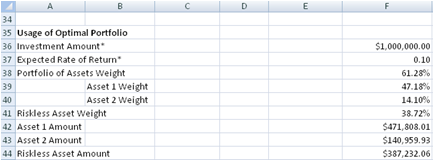
We provide multiple solutions to maximize your ability to find relief during tax season. Whether you need a straightforward approach or want to work with the Pros more closely, your sales representative can help you find the right fit. Implement our API within your platform to provide your clients with accounting services. Providers assist with property tax filings, handling the preparation and submission of forms related to property taxes for both residential and commercial properties. Professional tax preparers use rigorous error-checking processes, which enhances accuracy and minimizes costly mistakes. Effective outsourcing agreements include clear terms and communication channels, allowing you to maintain oversight and control over the process.

Optimizing Financial Services for a Leading CPA Firm
Contact our team to find out which of these solutions is right for you or learn more about 1040SCANverify. Reputable outsourcing providers implement stringent security measures to protect your sensitive financial information. This includes advanced encryption, secure access controls, and regular security audits to ensure your data remains safe and confidential. Tax preparation outsourcing involves delegating the task of preparing and filing your taxes to a specialized external service provider. This approach allows businesses to benefit from expert knowledge and efficient handling of their tax obligations without managing the workload in-house.
Address any issues promptly and make necessary adjustments to improve the outsourcing relationship. Regular monitoring will help maintain high standards and address any problems before they escalate. The more detailed and diverse your tax situation, the more specialized the provider should be to ensure all aspects are accurately addressed. The first step is for OBS staff to login remotely into the tax software that our client is using through a secure encrypted link. Providers prepare Form 1065, managing the tax reporting requirements for partnerships and ensuring proper allocation of income, deductions, and credits among partners.
Augment your firm with Taxfyle’s award-winning platform
Consider not just the immediate expenses, but also the long-term benefits, such as reduced risk of errors and the value of having more time to focus on your core business activities. Outsourcing even a portion of your workload can help make peak season more manageable. Our staff uses the same tax software as your firm, so you can review it as if your own staff prepared the return.
We’ll discuss what it is, who needs it, offshore vs. onshore options, and full vs. partial outsourcing. Finding qualified staff can be difficult—and training new hires while tax season ramps up is even more inconvenient. Outsourcing tax preparation to an experienced team with quick turnaround time helps you prepare more returns without hiring additional team members. By adhering to nci interactive stock chart these guidelines, you can maximize the advantages of outsourcing tax preparation and achieve a more efficient and accurate tax management process.
- Inquire about the provider’s data protection protocols to ensure your financial information is secure.
- OBS specializes in accurate and timely tax return preparation when outsourcing.
- Corporations’ benefit from specialized services for Form 1120S, addressing their unique filing requirements.
- This is not only beneficial from cost and scalability perspective, but provides more time to our partners to grow their business.
APIs by industry
Research and identify reputable providers through recommendations and online reviews, then request tailored proposals that address your requirements. This collaboration not only minimizes the risk of errors but also allows in-house teams to focus on their core competencies. Furthermore, outsourced providers often utilize advanced technology, streamlining processes and improving overall productivity. Customizable service options ensure that businesses receive tailored solutions that meet their unique needs, making outsourcing a strategic choice for effective tax management. Tax preparation outsourcing services for Form 1120 by C Corporation and Form 1120s for S Corporations is gaining popularity.
You can set expectations and stay informed, ensuring that your needs are met without sacrificing control. Everything from fees charged to non-billable hours all count when time is limited. period cost vs product cost period cost examples and formula video and lesson transcript Determine which returns and services can generate the most profit in-house, and consider outsourcing other tax prep work so that you can focus on those activities.
Clear objectives guide your choice, ensuring alignment with your business needs. After selecting a provider, a well-structured contract and thorough onboarding process are essential to establish a successful and efficient partnership. It’s time your accounting firm has access to relief from stress and bottlenecks during the busy season. From the ground up, our network of tax accountants is entirely composed of licensed CPAs and EAs. These Pros have the experience and capability to facilitate any scope of work and can use the same software as your firm. When you outsource with us, your firm can breathe a sigh of relief during tax season.
To keep you updated on the status of your clients’ tax returns, you may anticipate prompt responses, progress reports, and status updates. This channel of communication helps to foster a strong working relationship and ensures flawless coordination between your business and the outsourced provider. Unison Globus offers professional income tax return preparation in the USA, guiding you through the process to ensure discover more about cause branding vs cause marketing all deductions and credits are accurately claimed. Our online tax filing services provide a convenient and efficient way to file your taxes electronically, ensuring accuracy and timely submission. Unison Globus offers offshore tax preparation services, leveraging a global team of tax professionals to provide cost-effective and efficient tax preparation solutions.
Our expert team ensures accurate and timely submission of tax returns, compliance with all relevant tax laws, and optimization of tax savings. We also offer specialized small business tax preparation services to help enterprises navigate complex tax efficiently. Aside from consent, cost is the only notable difference between offshore and onshore income tax outsourcing services. Many firms make the mistake of overestimating client resistance to 7216 consent and pay extra for their assumption.















Recent Comments